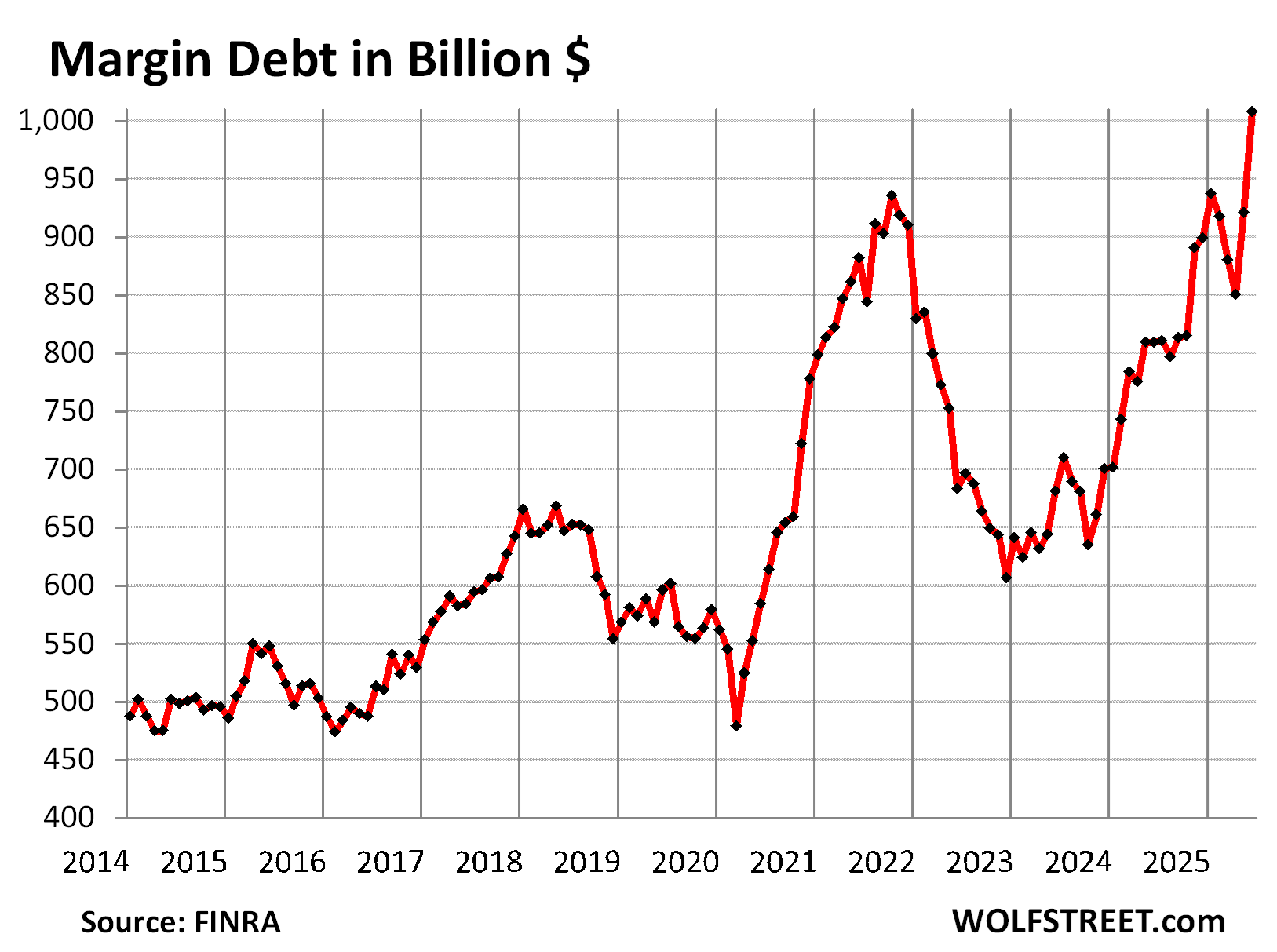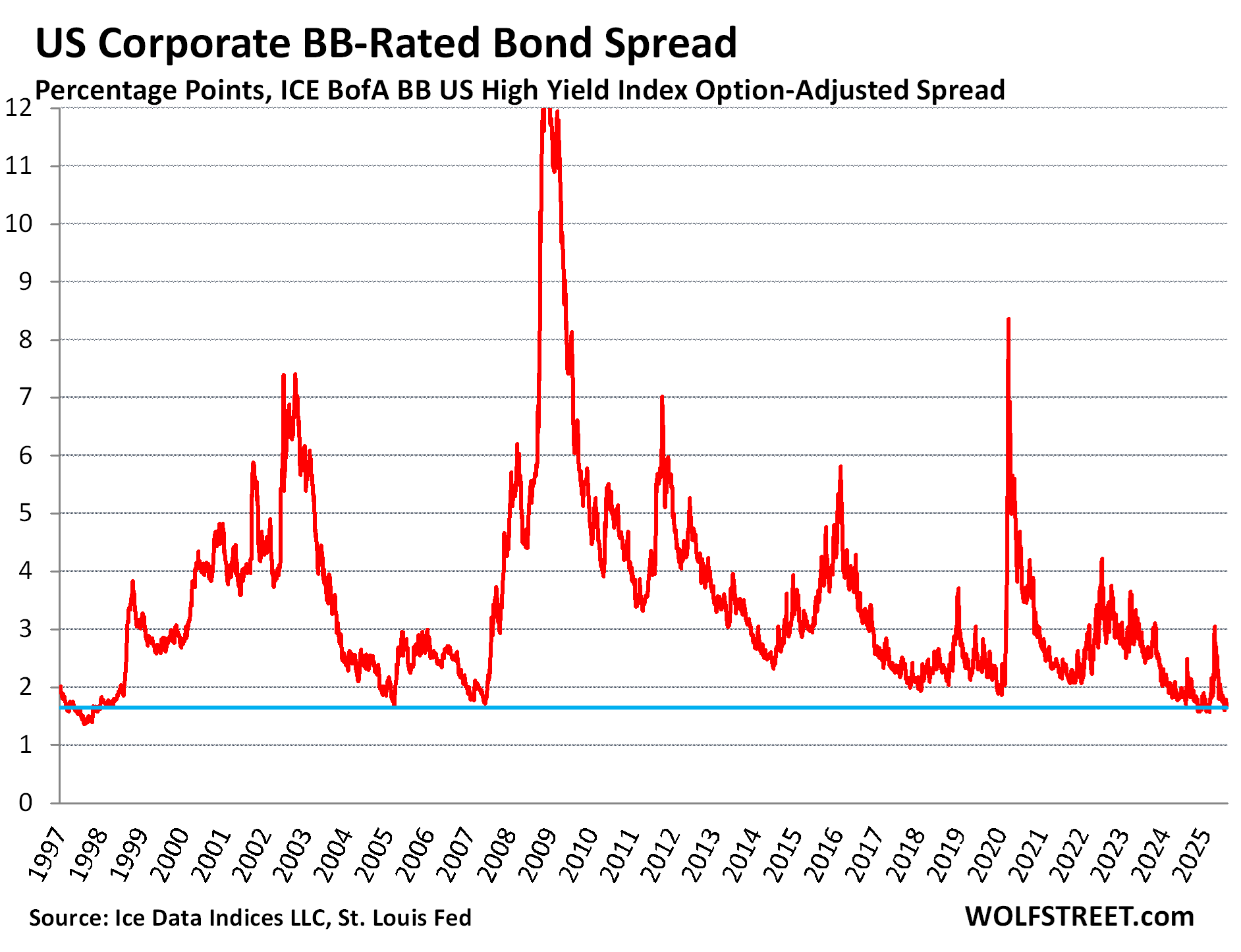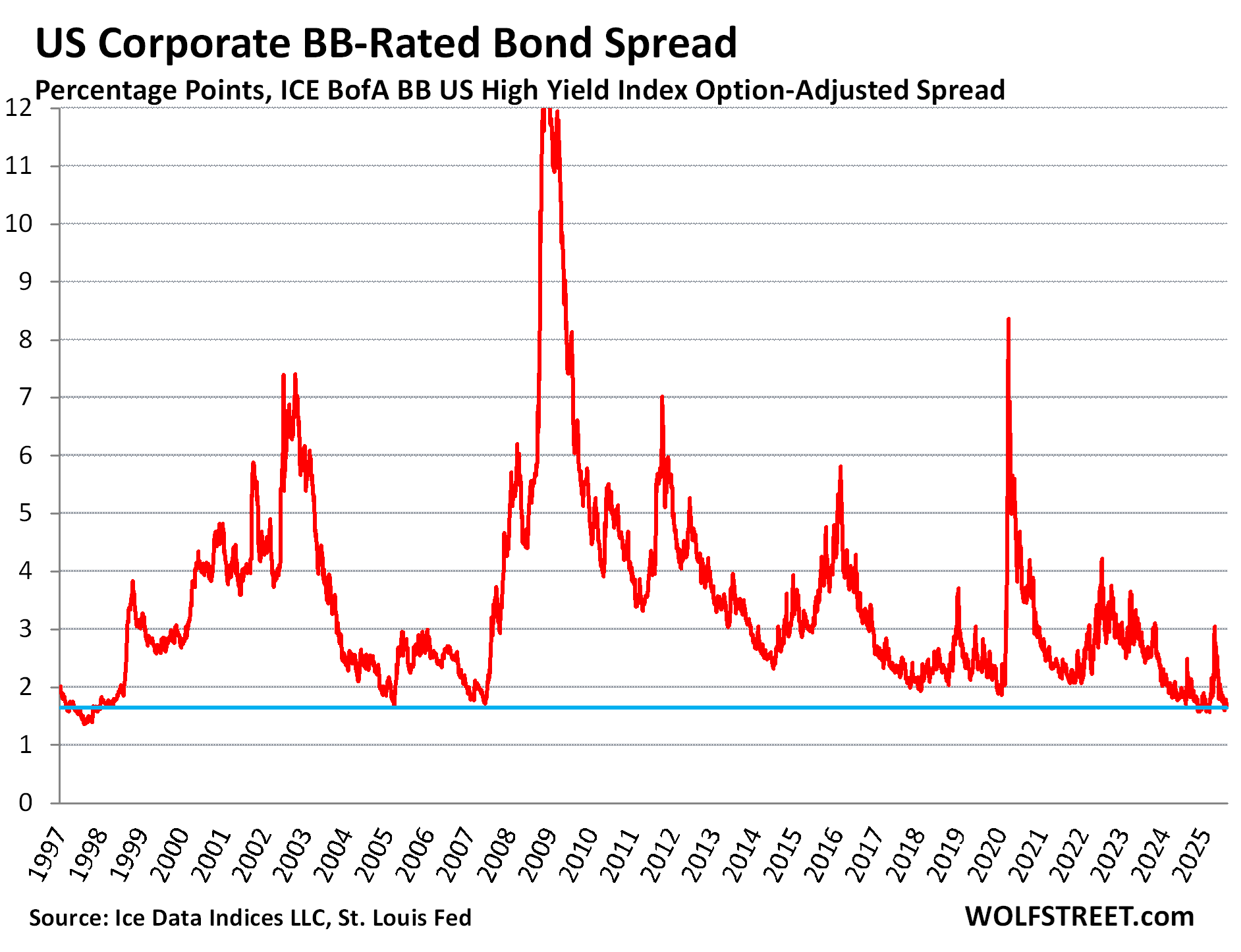Yves here. We’ve been making asides in Links and in posts about how frothy markets are. Investors seem to show no sign of fear, which historically has been a precursor to bad outcomes. Wolf does note a few exceptions, to which one should add private equity fundraising.
Wolf’s big point is in the headline: the Fed may regard its rates as restrictive for the real economy, but as far as many leveraged speculators are concerned, they see them at attractive.
By Wolf Richter, editor at Wolf Street. Originally published by Wolf Street
There are exceptions: Parts of commercial real estate are in a depression, and the housing resale market has frozen.
At the Fed’s post-meeting press conference on Wednesday, Powell will likely re-point out for the nth time that policy rates are mildly or moderately “restrictive,” with the midpoint of the Fed’s policy rates (4.33%) still being substantially higher than inflation rates. Overall CPI inflation accelerated to 2.7%, and core CPI to 2.9% in June, driven by reaccelerating inflation in services, especially non-housing services, and services matter because they’re two-thirds of consumer spending.
The Fed’s policy rates being substantially higher than any of the inflation rates in theory means that these policy rates turn financial conditions “restrictive,” which would then filter via the financial markets, especially via the credit markets, into the economy and restrict demand in the economy, which would allow inflation to cool.
But financial markets have blown this theory beautifully out of the water, they’re practically ridiculing it: Stocks have risen from record to record and are immensely expensive by just about every measure. The meme-stock mania has massively flared up again, where people gang up in the social media with leveraged bets on the most shorted stocks – GoPro, Kohl’s, Opendoor, Krispy Kreme, etc. – causing these stocks to briefly spike by silly percentages. There are signs everywhere that people are taking huge risks with a this-is-so-much-fun attitude, including with cryptos where another mania is in full swing. And margin debt blew out by a record amount, to a record, and is Exhibit A of loosey-goosey financial conditions.
Amid manias left and right, Goldman Sachs reported a 36% year-over-year spike in equities trading volume in Q2, Charles Schwab reported a 38% year-over-year spike, Morgan Stanley a jump of 23%.
And in the credit markets, spreads between high-risk junk bonds and Treasury securities are historically narrow – and that’s going to be Exhibit B of loosey-goosey financial conditions.
Sure, there are some exceptions. Powell cited real estate as an example where financial conditions are restrictive. He cited both commercial real estate, segments of which are in a depression, such as the office sector with record default rates, and residential real estate, where the resale market has frozen largely as a result of home prices having spiked by 50% and more in a two-year period through mid-2022, from already very lofty levels, and those prices don’t make any economic sense. But that hasn’t impacted the overall economy enough to make a dent.
Exhibit A of loosey-goosey financial conditions: Margin debt blew out, spiking by 8.3% in May and by 9.4% in June, to a record $1.01 trillion. In dollar-terms, June was the biggest month-to-month spike ever (+$87 billion). Combine margin debt with meme stocks, and it’s magic.

In percentage terms, there were bigger spikes, such as in November and December 1999, just before the Dotcom Bubble imploded – less than three years later, the Nasdaq Composite was down by 78% – and in May 2007 just before the simmering Financial Crisis broke out into the open for all to see.
Exhibit B of loosey-goosey financial conditions: Junk bonds are completely in la-la-land. The spread between BB-rated junk bonds and Treasury securities has narrowed to 1.64 percentage points, according to the Option-Adjusted Spread of the ICE BofA US Corporate BB Index. These BB-rated junk bonds yield only 5.64% on average (the WOLF STREET cheat sheet of corporate bond credit ratings by ratings agency).

A narrow spread between BB-rated junk bonds and Treasury securities means that investors are bidding up prices of these bonds despite their substantial risk of default, and thereby investors are not getting paid to take those risks, and investors just don’t care. They’re eager to take big risks to get a little more yield.
There were a few other times with an even narrower spread after the Dotcom Bubble:
On Mar 9, 2005, spreads narrowed to 1.65 percentage points. And in June 2007, just before nearly everything blew up, they narrowed to 1.71 percentage points.
And then from November 2024 off-and-on through February 2025, the spread was as narrow or slightly narrower than now, despite the supposedly restrictive financial conditions. During the lead-up to, and for a few days after, the Liberation-Day parade of horribles, the BB-spread widened sharply and peaked on April 7 at 3.06 percentage points. But that has now also gone away, and by July 25, the spread was back to 1.64 percentage points.

All of this clearly shows that the Fed’s policy interest rates are not restrictive – however Powell wants to phrase this. Financial conditions in the financial markets are amid the loosest ever. There is no tight liquidity anywhere. Markets are still awash in liquidity. Nothing is restrictive.



